Hole 12: Par 3, 118 YardsA fantastic short par-3. Despite it's short yardage it is very difficult to make a 2. The green is split into three sections, each of which is reasonably sized, but effectively is very small because of some large slopes on the green and a lot of tilt from back-to-front. Missing your target by a couple of yards could mean a 50 foot putt. Anything long is dead, while missing in the front bunkers is ok.
Perhaps the coolest part of this hole is the tee box. It is free form with lots of humps and bumps, but most importantly, the back tees are
lower than the more forward sets.
Why don't we see this more???Of course, the decreased elevation of the back tees makes the hole play slightly longer, but also, the view of the green's surface is more limited. Moving up in sets of tees garners more advantage than mere yardage.
A look at the free-form tee box:

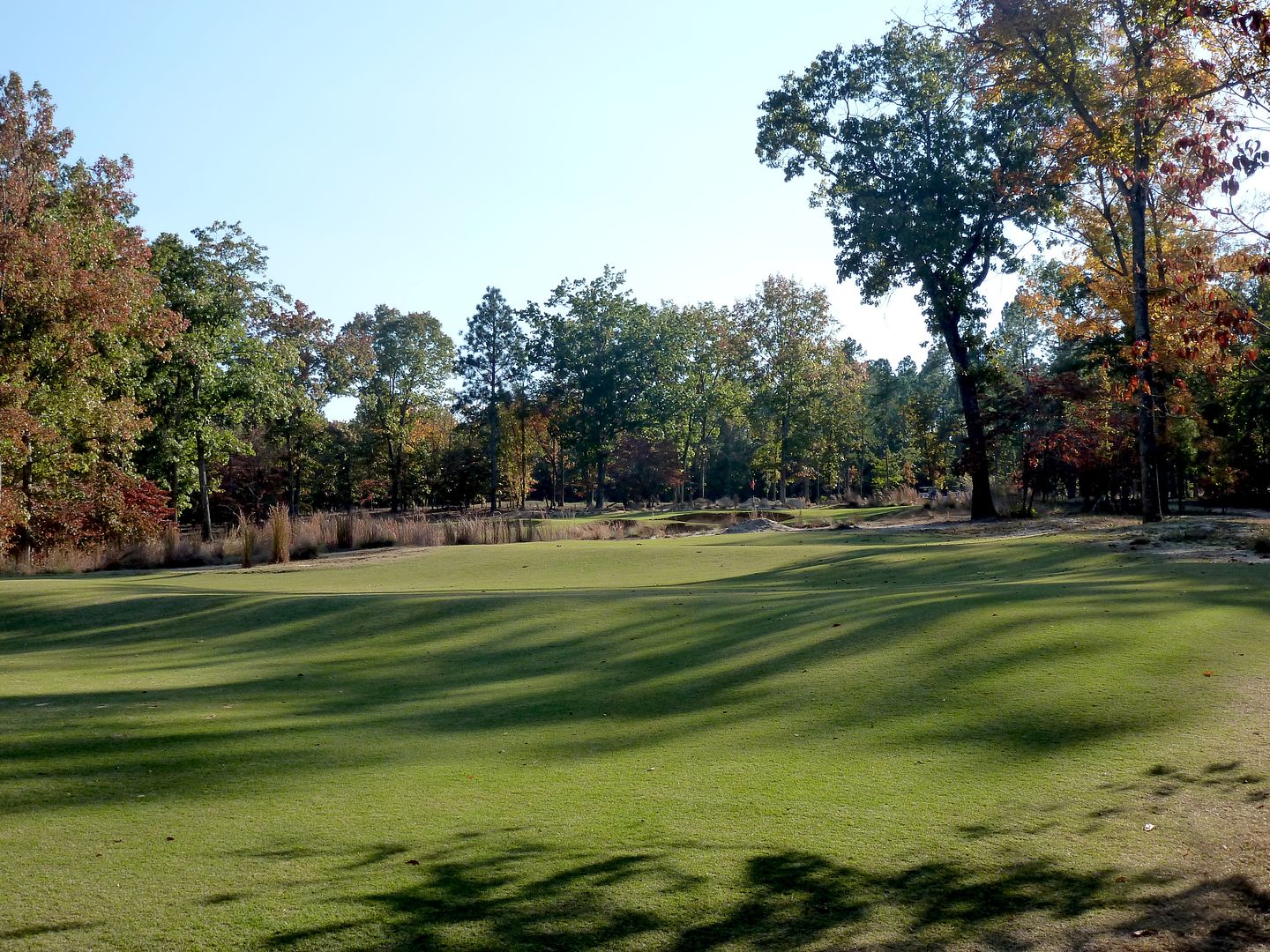
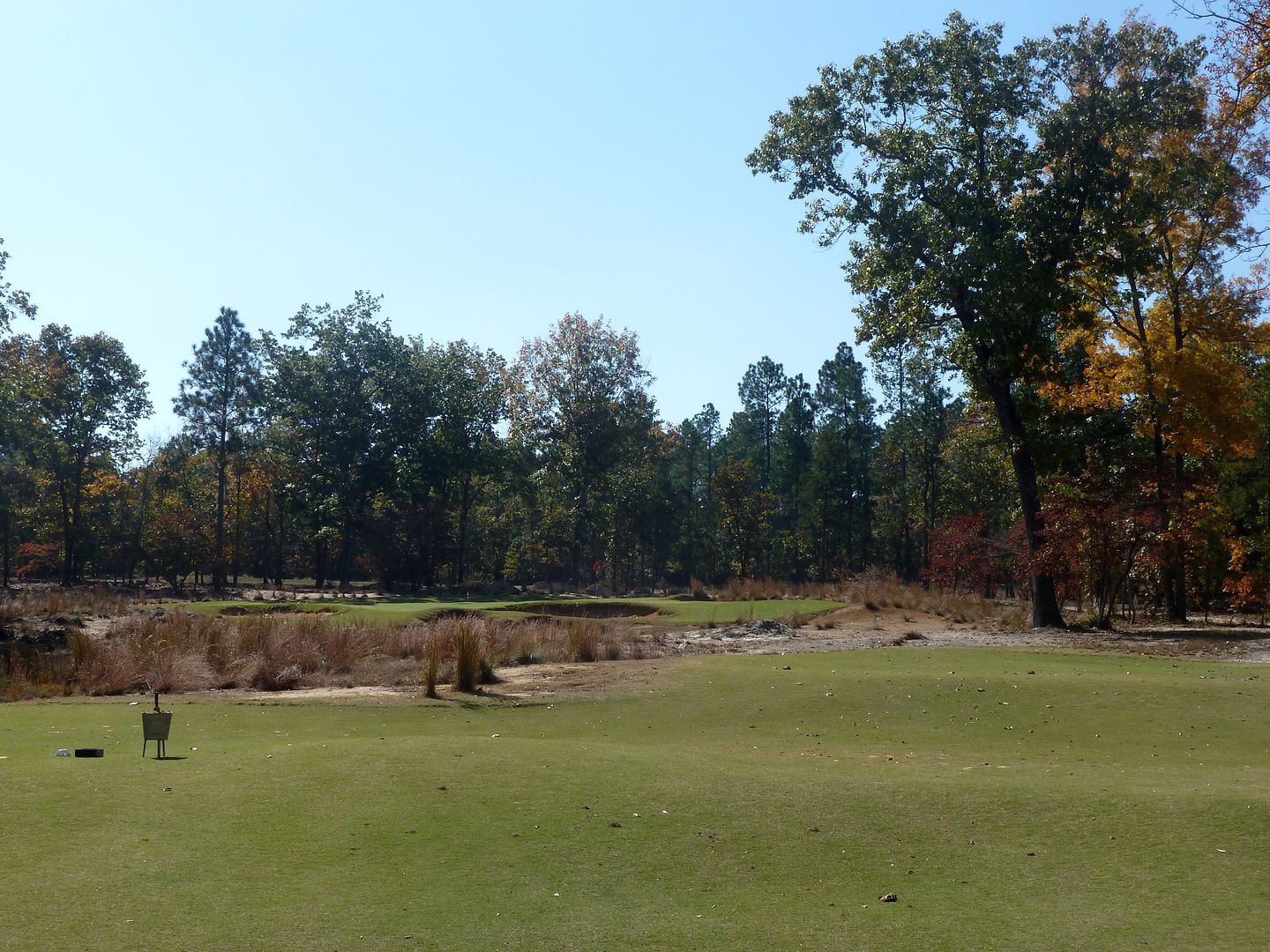
And a view of the hole as seen from the middle tee box:
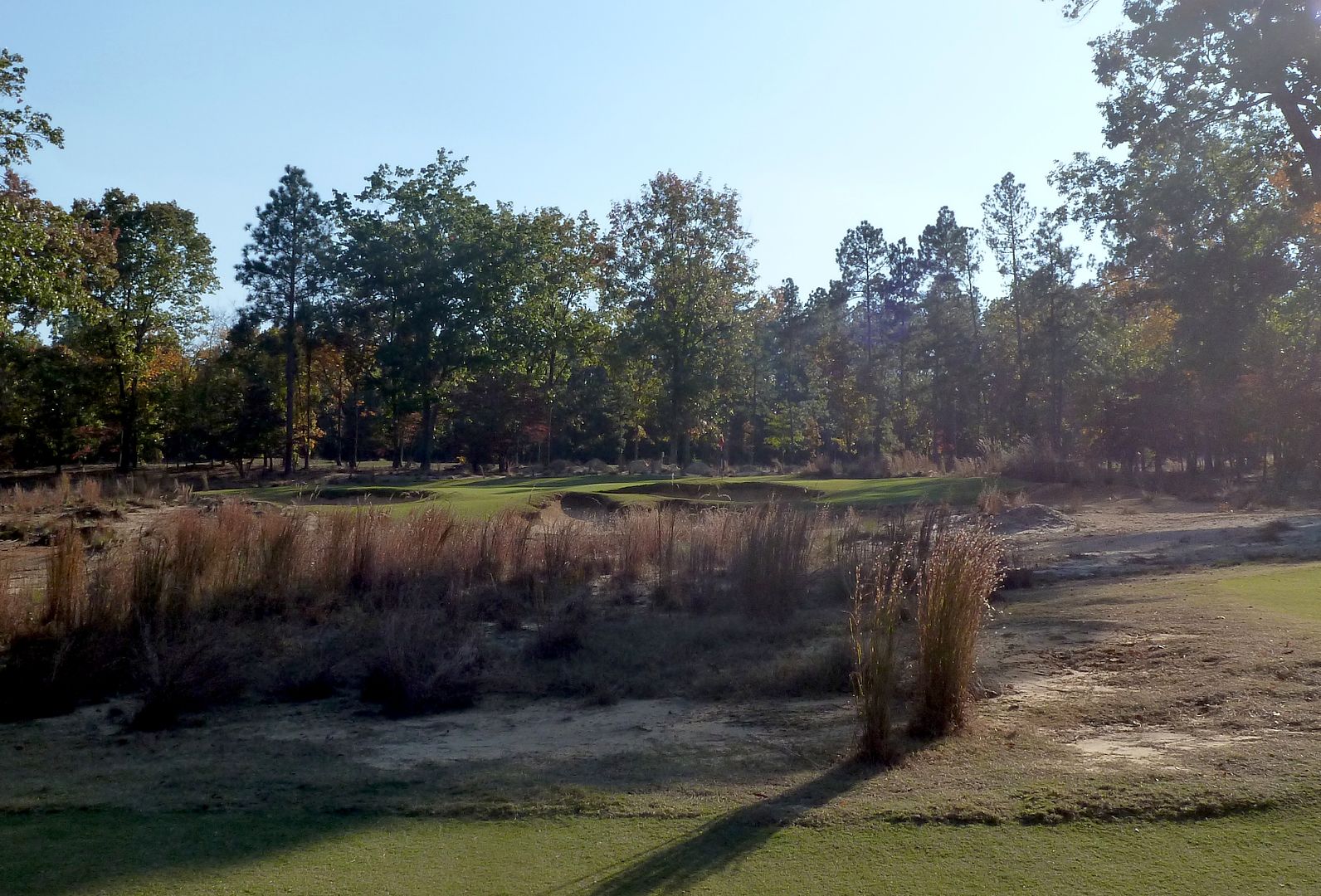
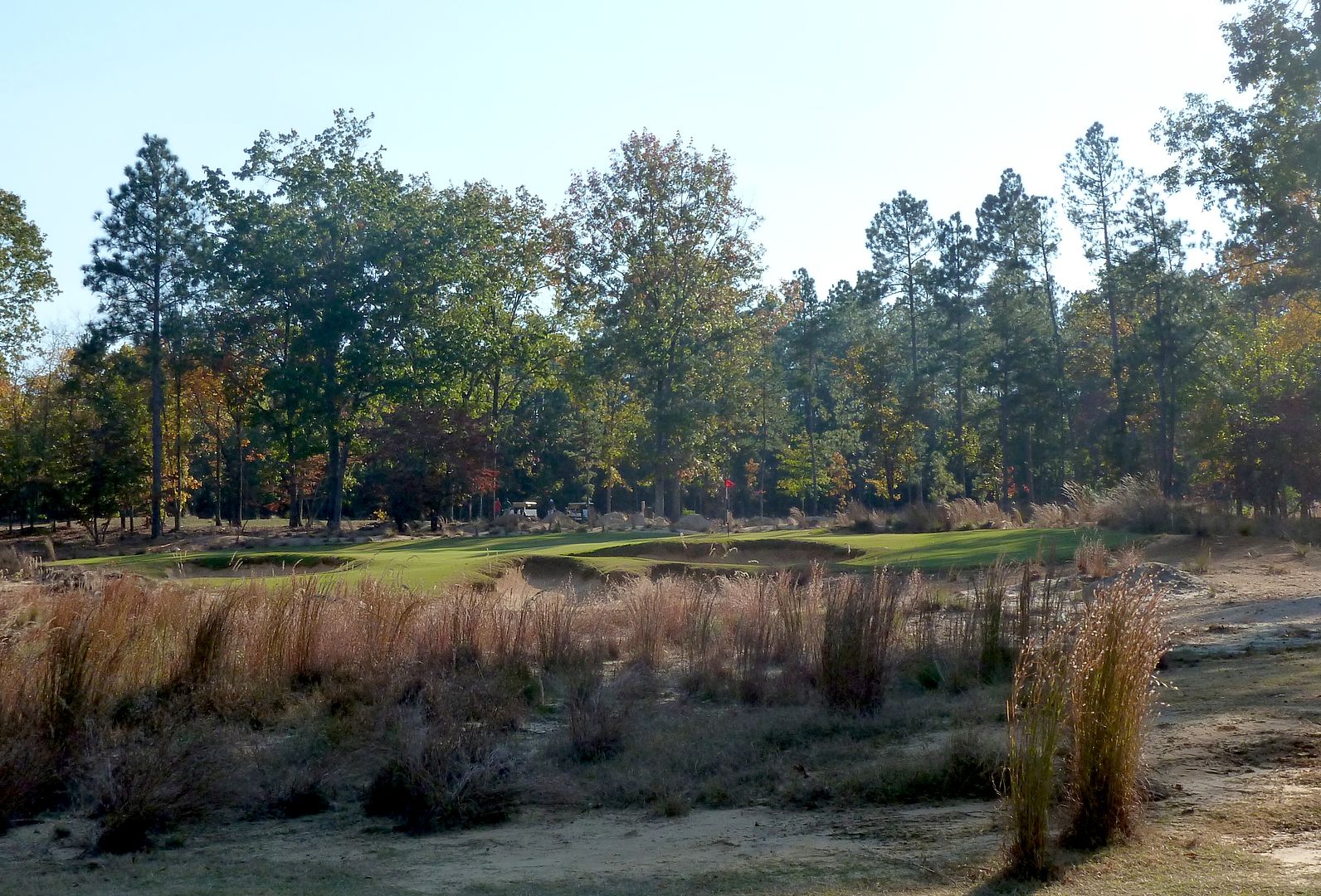 Hole 13: Par 4, 506 Yards
Hole 13: Par 4, 506 YardsMy lack of pictures probably reflects the fact that I think this is the least interesting hole on the course. Playing over 500 yards (470ish from middle tees) and into the wind, this hole is not reachable in regulation for the majority of golfers.
The tee shot is perhaps the widest on the course, with a single tree guarding the right side of the fairway.
The approach to the green is wide open, but the green is among the most difficult on the course, sloping very significantly from left-to-right.
The picture is taken from short-right of the green and shows some mounding that protects the green from that angle.
Note the bunker that is visible past the trees on the right -- it is the only bunker on this hole. It is long and right of the green and very difficult to find, but could come into play if a shot is played with too much strength toward the centre of the green and catches the significant left-to-right slope. When I saw that bunker I said to my caddie, "if I hit a great 3-wood at the green and run through into that bunker, I'm pretty sure when I saw where my ball ended up I'd say 'are you f*$%ing kidding me?'" He said, "the one guy I've ever seen in that bunker said exactly that."

 Hole 14: Par 4, 307 Yards
Hole 14: Par 4, 307 YardsIn another thread (
http://www.golfclubatlas.com/forum/index.php/topic,48133.0.html) Matt Ward extolled the virtues of the 14th and 15th holes at Dormie Club in Pinehurst, NC. It seems that almost everyone agreed, but for a single dissenting opinion. I am the second to disagree. N.B. I loved the golf course as a whole.
I am not saying the holes are bad, just that something seems off with them. They are holes that should provide many strategic options/decisions, but I believe for any given player, there will be only a single way to play the hole and this is because of an unbalanced risk/reward equation. On 14 there is too little reward to justify any risk, and on 15 there is too significant a risk to justify the reward.
Let's begin with the 14th. A nice respite after the 500+ yard, into the wind, par 4 13th, no doubt. But, in my mind, it is a very mediocre short par-4.
At 307 yards, uphill, there are only a handful of players who can reach the green from the tee. For this select group, the hole is probably very interesting. I'm not part of this group and could care less how the hole plays for them.
Much like the 14th at Bandon Trails, the ideal tee shot will hug the left side of this fairway, which cants severely from left-to-right. Aside from a steep run-off on the right side of the green, that seems to be where the similarity ends. There will be no debate about whether or not this hole is fair. There is zero reason not to make 4 (or 3). The green is protected by a solitary bunker at the front-right portion of the green (up-and-down from here is not a problem).
Ostensibly (and perhaps in practice) the ideal approach is from the left, where one has a choice between a lofted approach and a ground -game option (though, let's be honest, how many even in this group will opt for anything but the LW from 75 yards). The approach from the right is visually intimidating because of the bunker, but simple in practice. The green slopes somewhat severely from back-left to front-right, making approaches from the right side of the fairway very easy to control once they land on the green (ie they will stop quickly).
A somewhat bad spot (though certainly recoverable - my playing partner made 3 from there) is just short of the bunker leaving a delicate chip.
The only really bad spot off the tee is missing in the left woods.
So here's my question: with woods left and trouble right, it being impossible to reach the green for most players, and an approach from short-right being one of the toughest spots, does this hole not become a bore with the prudent player always hitting hybrid(ish) to the centre/right part of the fairway, and SW into the slope of the green? I understand that in matchplay, things change, but there is no way a thinking player will ever hit driver here. Just so little reward for the added risk.
From the Tee
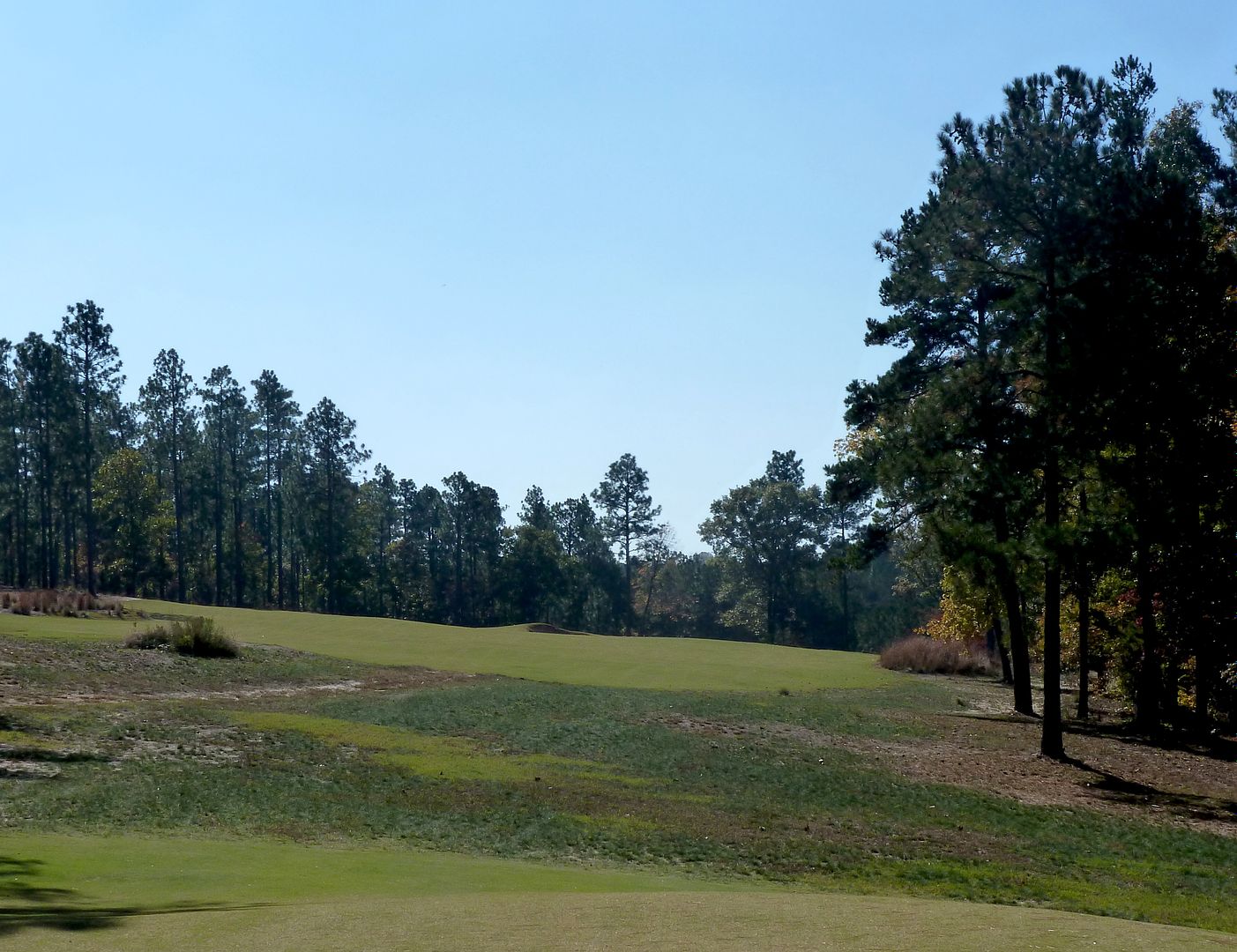
Approach from the Left
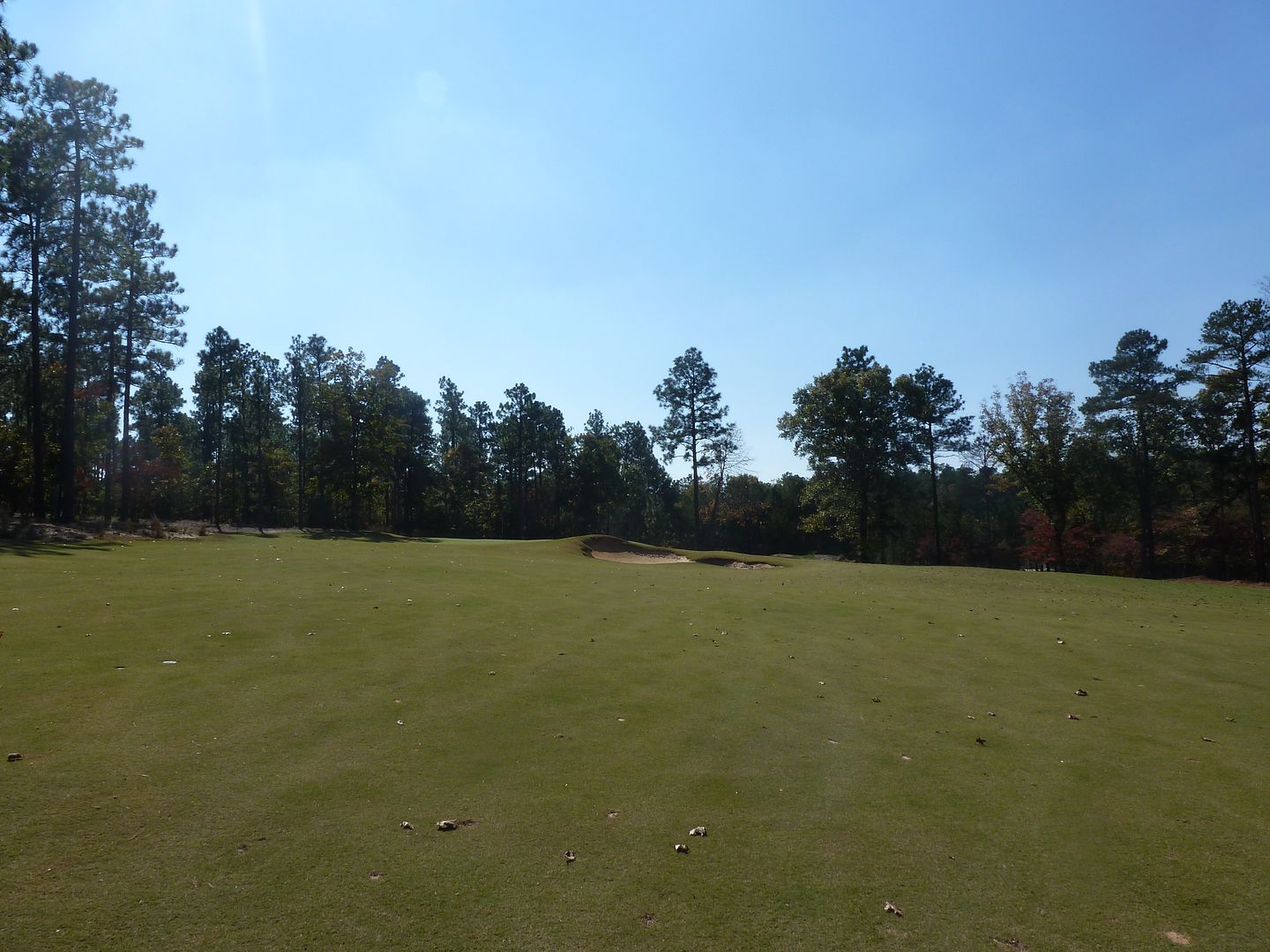

Approach from the Right
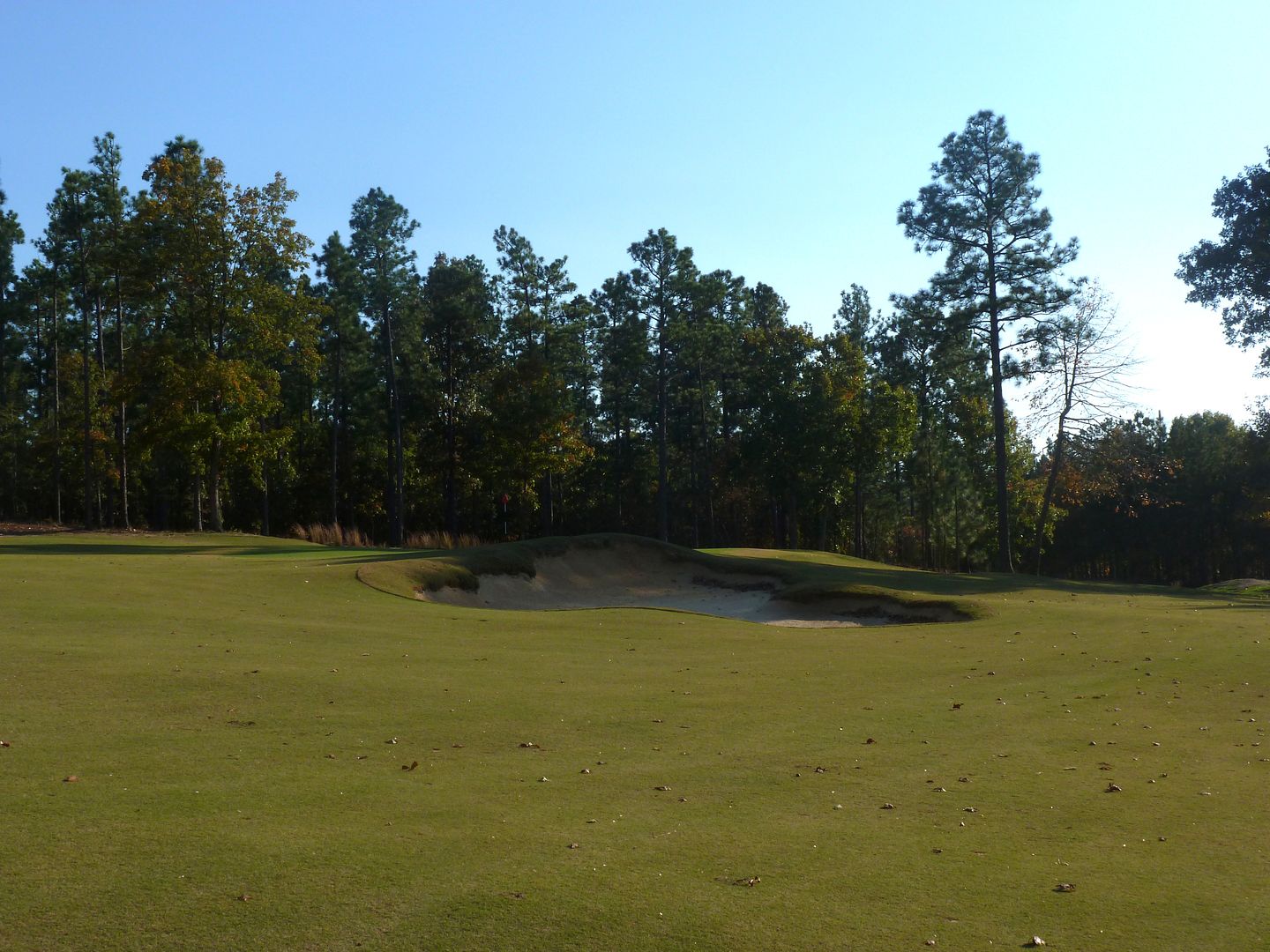 Hole 15: Par 4, 387 Yards
Hole 15: Par 4, 387 YardsA tee shot we've all seen many times before, a forced carry over a diagonal hazard. After the tee shot, however, this is no ordinary hole. An interesting aspect discussed by Ed Oden here (
http://www.golfclubatlas.com/forum/index.php/topic,46385.0.html) is that the green is in view from the tee but is blind from the fairway (also note, the 11th at The Dormie Club also has this feature).
From the tees I played, it is a 215 yard carry over the hazard at the left side of the fairway bunkers. Given the severe angle of the crossing hazard, the carry gets much longer on more aggressive lines. The fairway bunkers (which are a terrible spot to approach from) mean that even for bombers, there is no option to just 'kill it and find it.' The green is probably 340 yards on a straight line and I suppose is reachable for a select few, but again, I don't worry about them.
Off the tee, anything missed just a bit right, to quote Mr. Ward, is "reload city." There is no way anyone will purposely challenge the right side. Given the long carry off the tee, most players will not hit anything but driver. Longer players could challenge the right side by tying to be more precise with hybrid (or similar), but our caddies said that "no one ever, ever tries that. If you can carry with hybrid, great. Hit hybrid just left of the bunkers." So much for options.
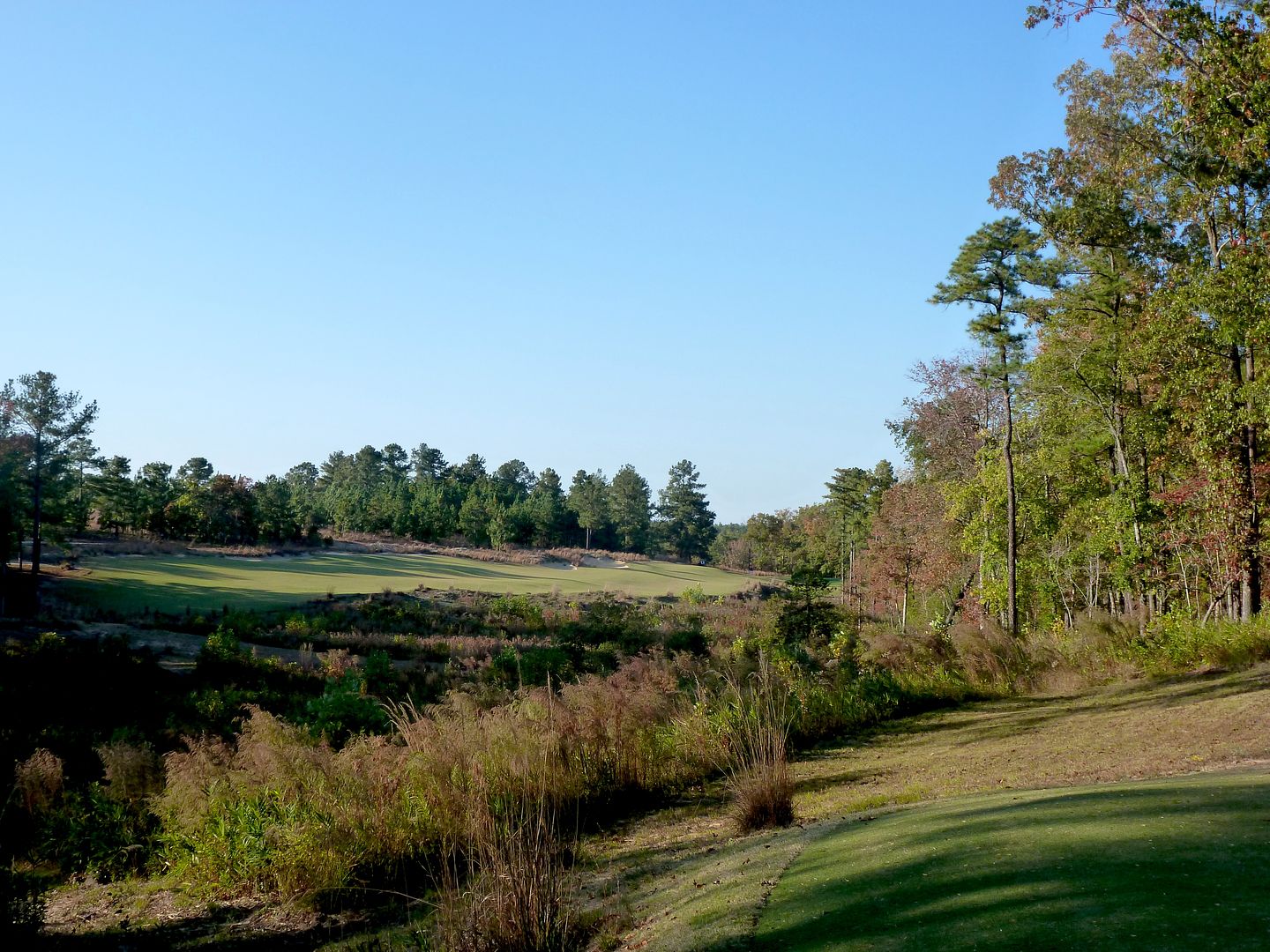
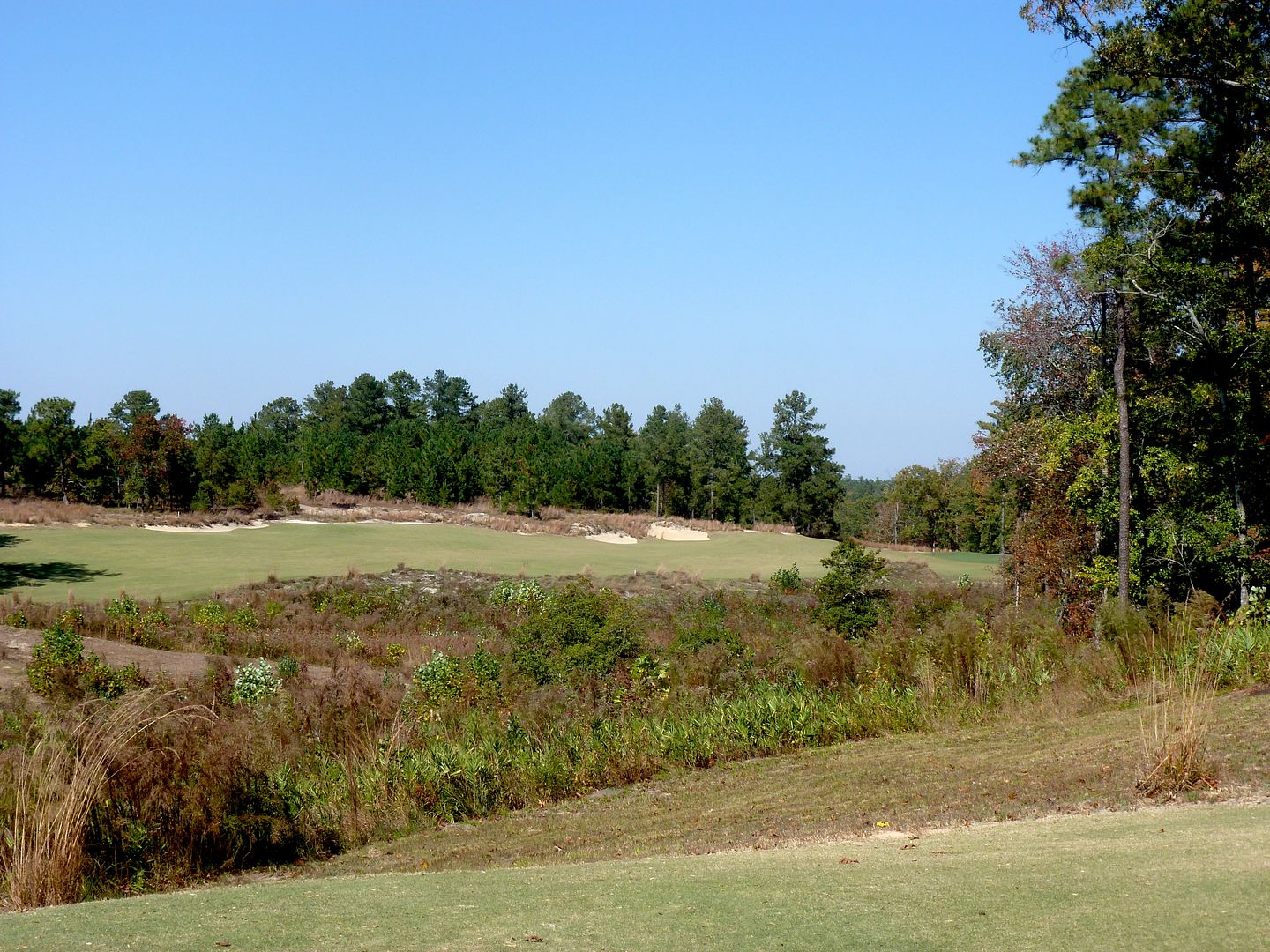
Now the hole gets interesting. This picture is taken from the centre of the fairway and on a line that very few players would ever be purposely right of. Clearly, the approach is completely blind, hitting over the hill. Unfortunately, I don't have a picture, but from the right 1/3 of the fairway, one has a clear view of the green.
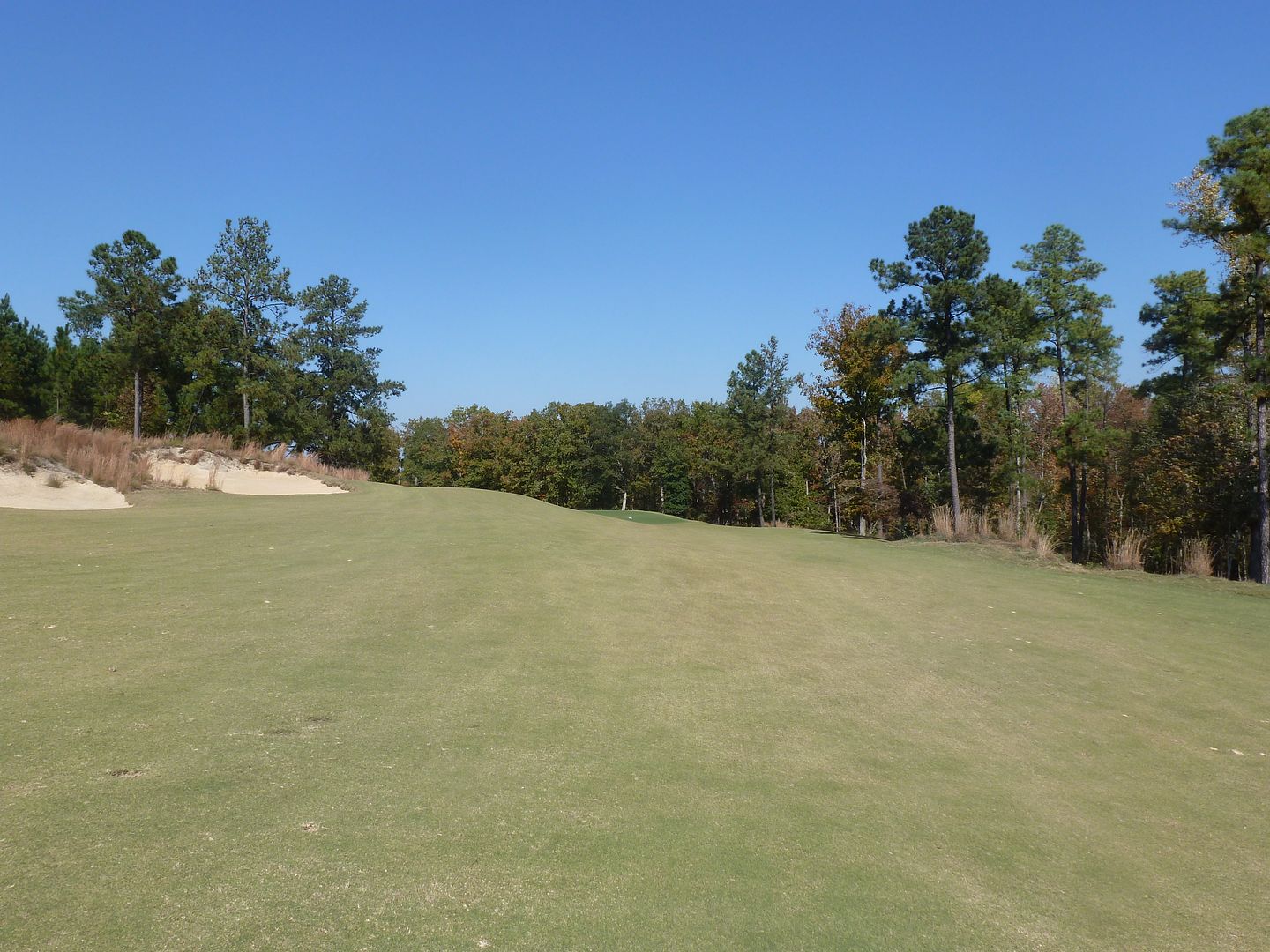
Over the hill is a very unique green, playing at almost a 45 degree angle to the left side of the fairway. There is a signficant downslope short of the green and a huge back ridge the helps stop balls from going over the green (both are very flattened by the camera). The problem is that the target is so narrow that almost no one can aim for it. Our caddies said you just hit the ball up on the hill short of the green and hope it rolls onto the green. Usually it does, but sometimes it doesn't, and then you're screwed. OK, fine, rub of the green and all that, but when approaching from the right you don't have this issue. You have a clearer look up the throat of the green with sideboards. A great opportunity for 3.

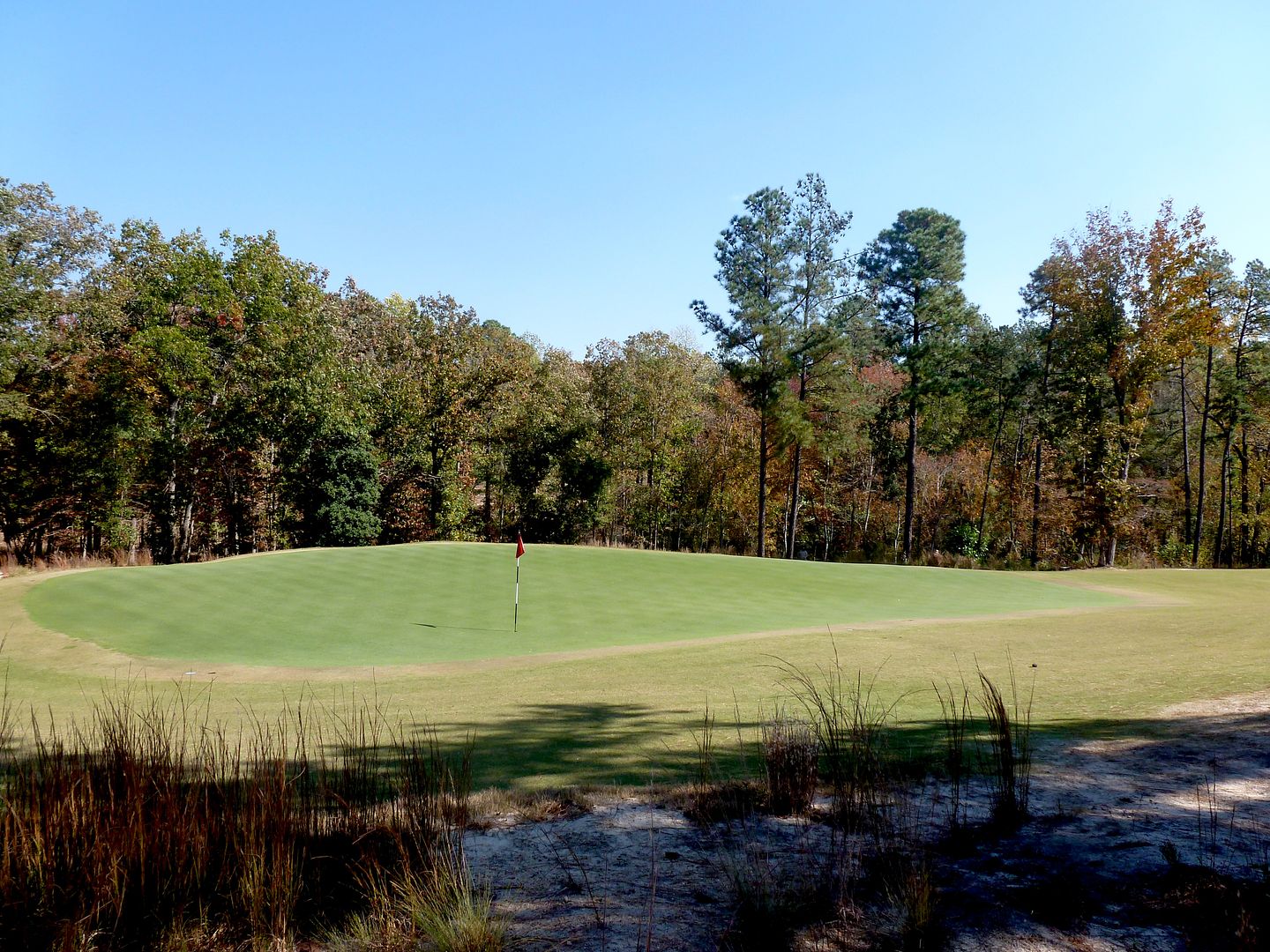
And a look at the severe penalty for missing long/right
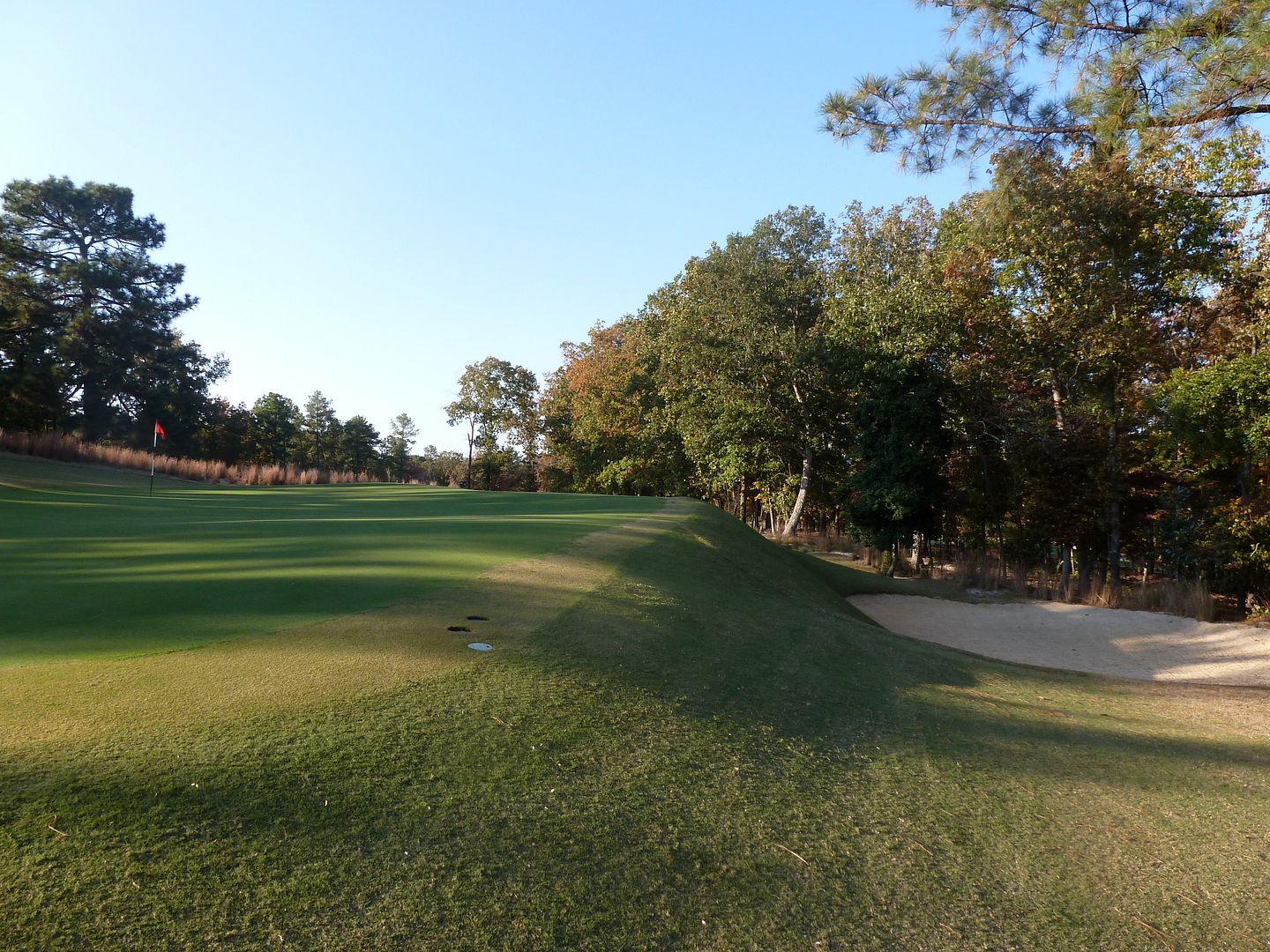

So here's my problem: This is such a cool approach, but I feel for almost all who play it, too much of it will come down to luck. There is definitely a benefit to being on the right side of the fairway, a big one, but not one big enough to justify a stroke and distance penalty. I think C&C just barely missed the mark here. If the hole was shorter (and the forced carry shorter), it would be exceptional. If the angle of the hazard were not quite as severe, it could be exceptional. As is, it is lay-up tee shot, luck approach, but it could be so much more.